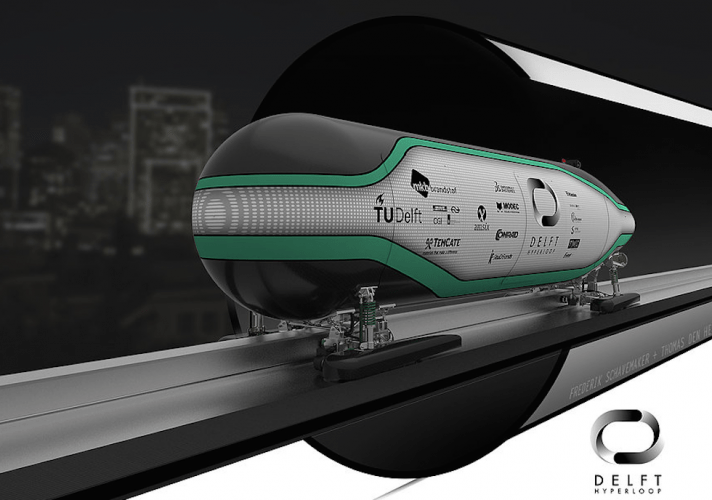
The concept capsule, designed by a team of students at TU Delft in the Netherlands, was also awarded the prize for the most innovative design in the Hyperloop competition.
The competition was established by SpaceX and its founder Elon Musk in 2015, in a bid to stimulate the development of the new form of transportation, which they have dubbed Hyperloop.
The system consists of a number of passenger capsules, which are designed to travel through tubes in a partial vacuum, with the lack of pressure allowing them to reach very high speeds. This could allow a Hyperloop capsule to travel between the outskirts of Los Angeles and the San Francisco Bay area in around 35 minutes, for example.
The Delft team were one of 124 who presented their designs to a jury of researchers and experts from Tesla Motors and SpaceX in the first stage of the competition. They will now join 20 other teams in progressing through to the next stage, in which they will build a half-scale version of their capsule and test it on a track in California in the summer.
Unlike the capsules designed by most other teams, the TU Delft design uses permanent magnets to allow the vehicle to hover approximately two centimetres above the track, as it moves over a conductive plate, according to team captain Tim Houter.
“In a full-scale, commercial system, the capsule would accelerate out of the station using a linear electric motor, with the stator windings inside the track,” he said. “Then because there is not much air inside the tube, it would just float along at very high speed, with only an extra boost needed on the way to stay at that speed, and then at the station you would decelerate your Hyperloop vehicle,” said Houter.
Energy would be recovered using regenerative braking, he said.
“This makes it a very energy efficient system,” he added.
Solar panels on top of the tubes themselves could generate additional energy to power the capsules.
In the next stage of the competition, the half-scale capsules will race around a 1.6km test reduced-pressure tube, which is to be constructed next to SpaceX’s headquarters in Hawthorne, California.




JLR teams with Allye Energy on portable battery storage
This illustrates the lengths required to operate electric vehicles in some circumstances. It is just as well few electric Range Rovers will go off...